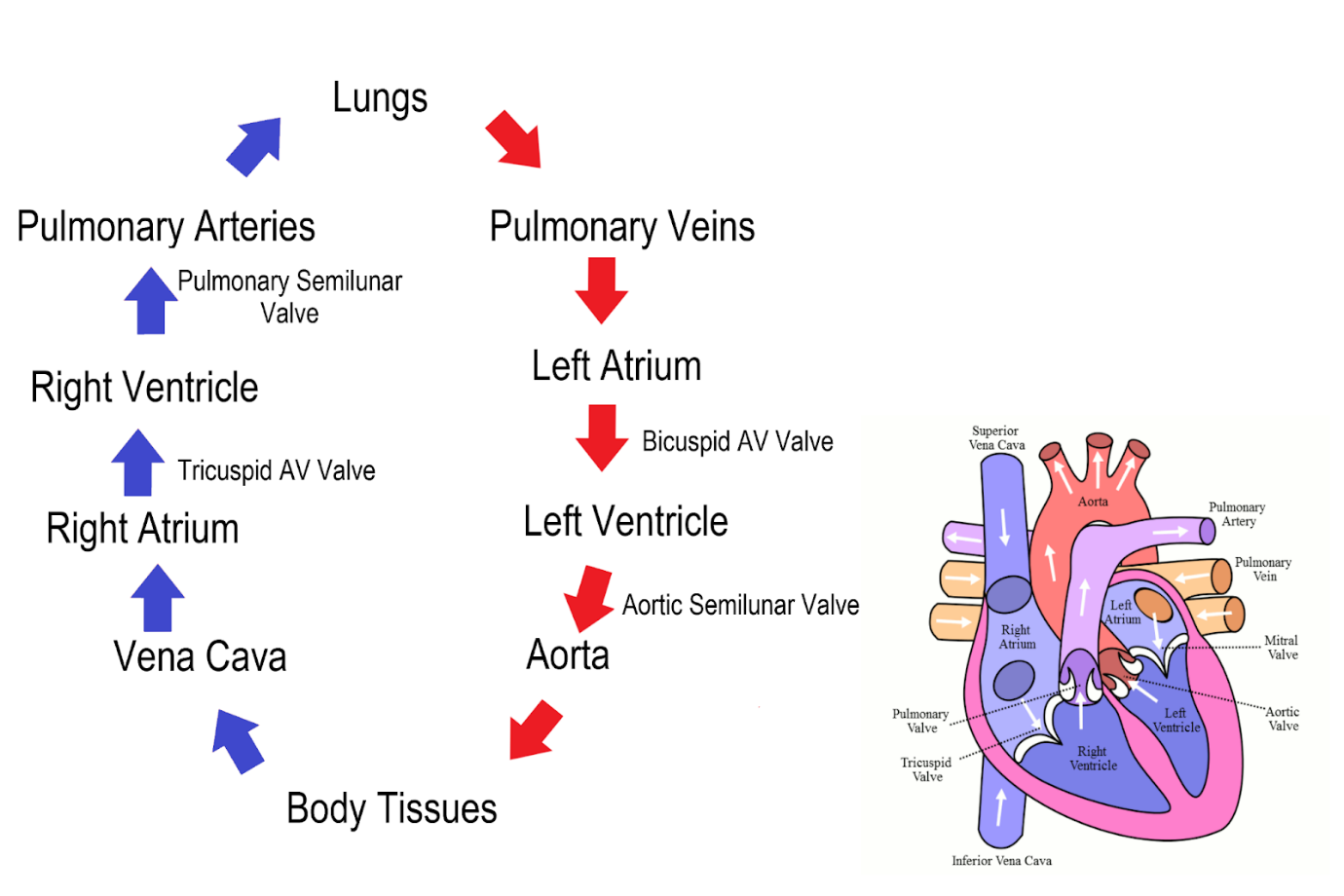The nurse is discussing the blood flow pattern of the heart. The nurse should recognize which of the following as the accurate blood flow pattern of the heart?
Aorta-Right atrium-right ventricle-pulmonary vein-lungs- pulmonary artery left atrium-left ventricle
vena cava-right atrium-right ventricle-pulmonary vein-lungs- pulmonary artery-left atrium-left ventricle
vena cava→ right atrium-right ventricle-pulmonary artery-lungs- pulmonary vein-left atrium-left ventricle
Aorta-right atrium-right ventricle-lungs-pulmonary vein-left atrium-left ventricle- vena cava
The Correct Answer is C
In this sequence:
Vena cava brings deoxygenated blood from the body into the right atrium.
Blood flows from the right atrium to the right ventricle through the tricuspid valve.
The right ventricle pumps blood into the pulmonary artery to the lungs.
In the lungs, blood is oxygenated and returns to the heart via the pulmonary veins into the left atrium.
From the left atrium, blood moves to the left ventricle through the bicuspid (mitral) valve.
The left ventricle then pumps oxygenated blood into the body through the aorta.
This sequence represents the systemic and pulmonary circulation of the heart.

Nursing Test Bank
Naxlex Comprehensive Predictor Exams
Related Questions
Correct Answer is D
Explanation
. Presence of breath sounds: While assessing the anterior chest, the nurse should listen for breath sounds over various areas of the lungs. However, this is related to auscultation, not inspection.
B. Diaphragmatic excursion: Diaphragmatic excursion involves assessing the movement of the diaphragm during breathing. This is typically done by percussing the level where dullness changes to resonance during inhalation and exhalation. It is more related to percussion, not inspection.
C. Symmetric chest expansion: Symmetric chest expansion refers to the equal expansion of both sides of the chest during inhalation. The nurse can observe and palpate the chest to assess if it expands symmetrically on both sides. This is a crucial aspect of the inspection of the anterior chest.
D. Shape and configuration of the chest wall: The shape and configuration of the chest wall, including abnormalities or deformities, should be assessed during inspection. This includes observing for any asymmetry, deformities, masses, or scars on the anterior chest.
Correct Answer is D
Explanation
A. A shiny, pearly white color tympanic membrane: This is a normal finding. A healthy tympanic membrane often appears shiny and pearly white.
B. The presence of cerumen: This is a normal finding. Cerumen, or earwax, is a natural substance that helps protect the ear canal.
C. The presence of a cone of light: This is a normal finding. The cone of light is a reflection of the otoscope light on the tympanic membrane and is a normal variation.
D. A yellow or amber color to the tympanic membrane: This is considered an abnormal finding. A yellow or amber coloration of the tympanic membrane can indicate the presence of fluid or infection behind the eardrum, which may be a sign of otitis media or other ear conditions.

Whether you are a student looking to ace your exams or a practicing nurse seeking to enhance your expertise , our nursing education contents will empower you with the confidence and competence to make a difference in the lives of patients and become a respected leader in the healthcare field.
Visit Naxlex, invest in your future and unlock endless possibilities with our unparalleled nursing education contents today
Report Wrong Answer on the Current Question
Do you disagree with the answer? If yes, what is your expected answer? Explain.
Kindly be descriptive with the issue you are facing.
